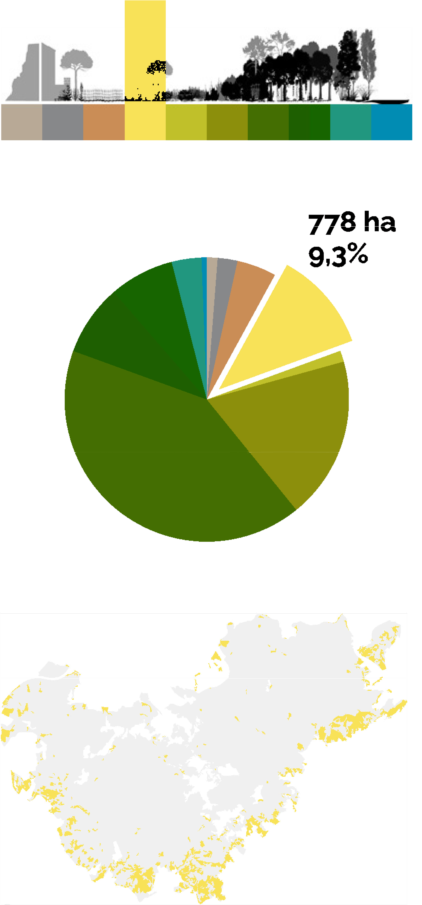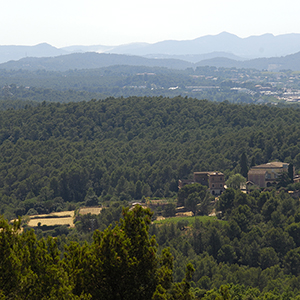The savannah-like grasslands (Hyparrhenietum hirto-pubescentis) are mostly found on the Barcelona side of the Serra, which is also the sunny side. The scientific community considers this plant formation an expansion of the African savannas within the Mediterranean mosaic.
The vegetation on these grasslands is structured into two well differentiated herbaceous strata: tall plants, which can exceed a metre in height and are dominated by common thatching grass (Hyparrhenia hirta), and shorter vegetation of up to 30 cm, defined by retusum grass (Brachypodium retusum), which can be very dense and gradually cover all open spaces. Other species are also common, such as fennel (Foeniculum vulgare), fringed rue (Ruta chalepensis) and Spanish broom (Spartium junceum).
These open environments are areas of great ecological interest, as demonstrated by the fauna that lives there, despite appearing barren at first sight for the absence of trees.
Some time ago, the grasslands became more extended along sunny slopes as a result of tree felling in the wooded areas. For years they were used for the pasturing of sheep and goats, reason for which the sheep- and goat-herders regularly burned the grass and shrubs that grew there. As pasturing disappeared, the regeneration of woody and shrubby vegetation began and has, in general, continued successfully. In this context, there is now a clear relation between the distribution of these grasslands and the frequency of wildfire outbreaks in the zone.




